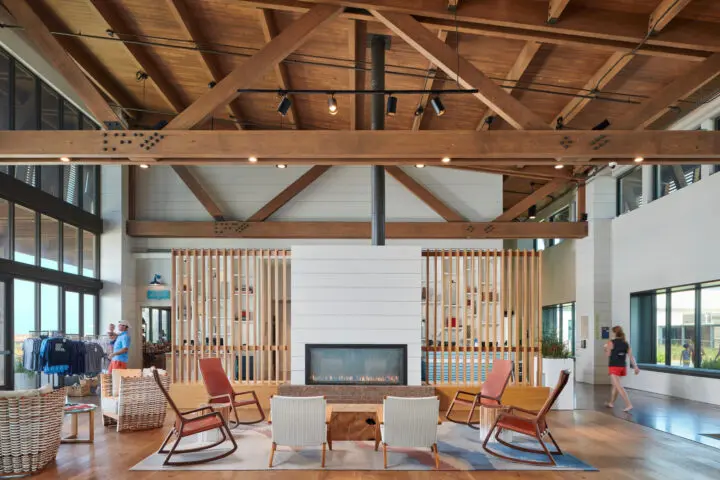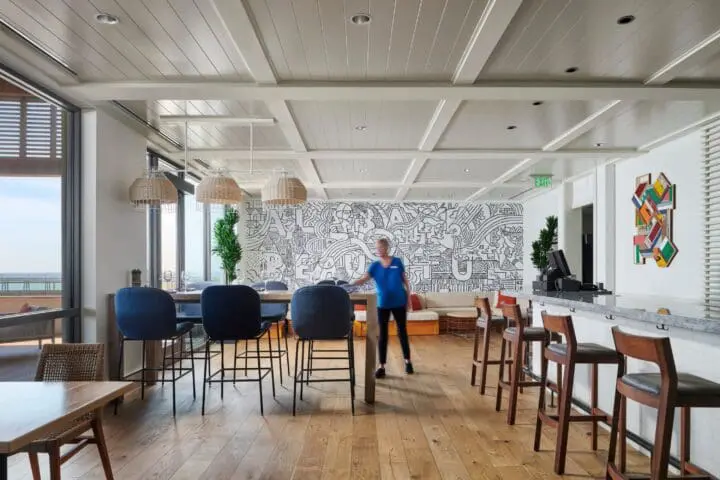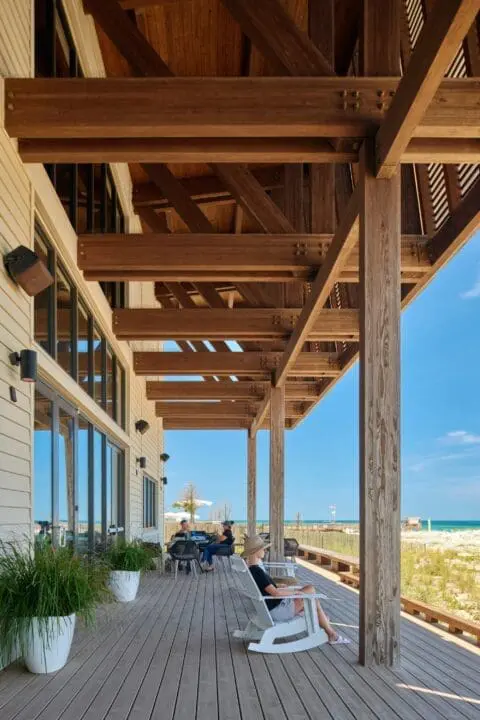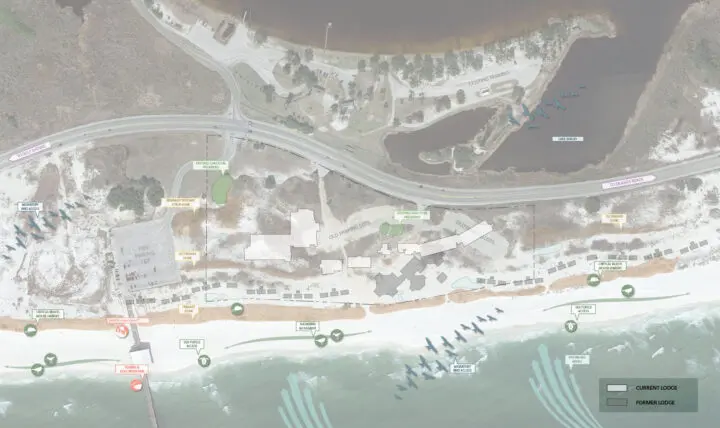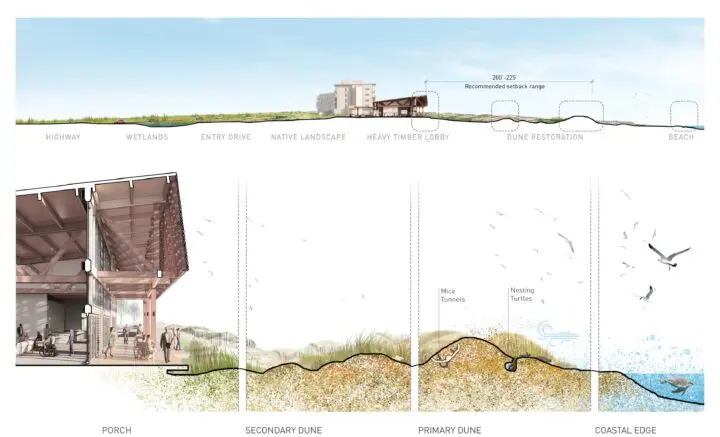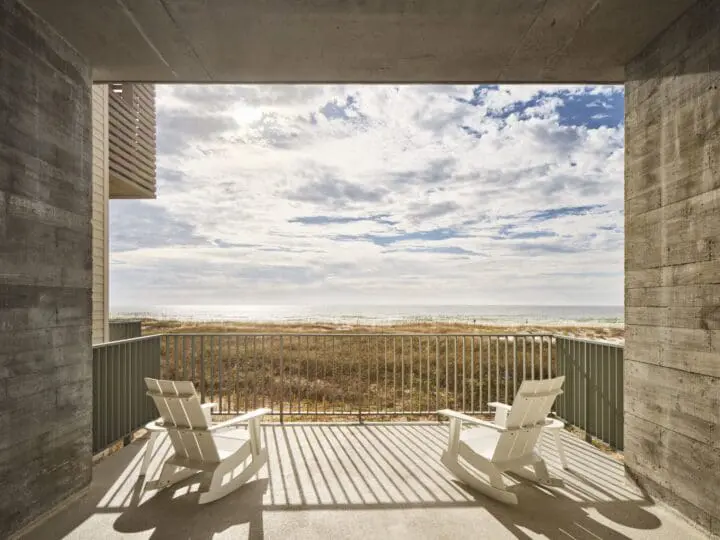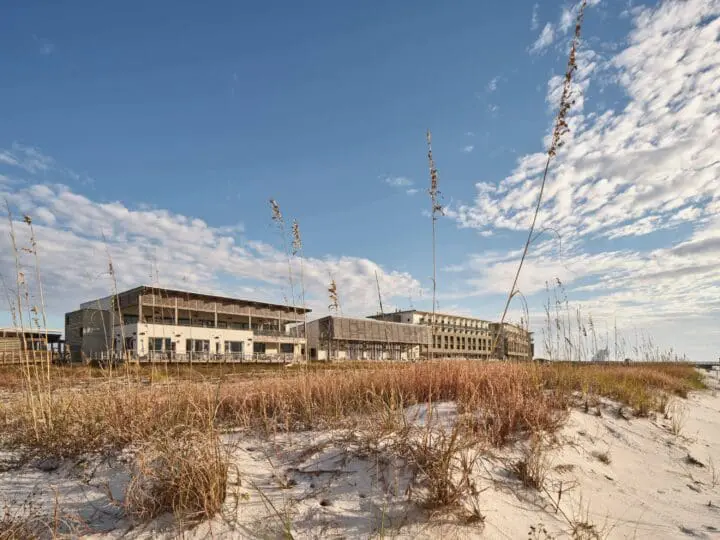
The Lodge at Gulf State Park
The Lodge at Gulf State Park is an essential component of the restoration initiative to revitalize the 6,150-acre Alabama’s Gulf State Park, which is the primary revenue generating park for the entire Alabama state park system. The Lodge serves as a model of resilient, environmentally friendly coastal development and improves public access to the park’s beaches, trails, and freshwater ecosystems. The project is certified LEED Gold as well as the first FORTIFIED Commercial™ building and the first SITES Platinum hotel in the world.
In collaboration with Rabun Architects and ArchitectureWorks.
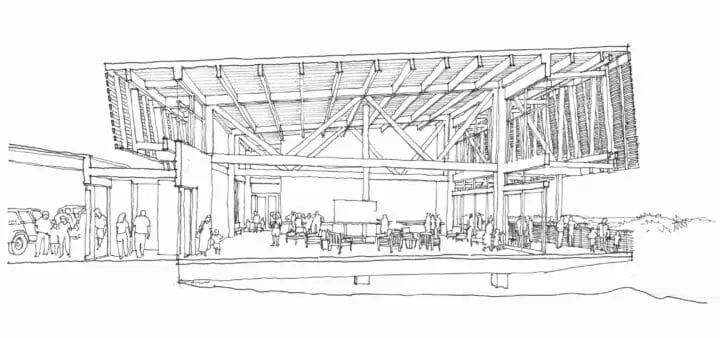
The Lodge was conceived to increase public access to Gulf State Park’s natural assets, celebrate its unique beauty, and provide educational opportunities for everyone. Visitors can easily access the beach as well as over 28 miles of pedestrian and bicycle trails and boardwalks through one of the most diverse ecosystems in the Southeast. The Lodge serves as a regional model for beautiful and resilient coastal stormwater management strategies. Almost two acres of the landscaped areas surrounding the Lodge form a hardworking holistic stormwater management system complemented by native plants that thrive without irrigation.
The Lodge at Gulf State Park
Consultants
- Architect of Record: Rabun Architects
- Design Architect: Lake Flato Architects
- Design Advisor: ArchitectureWorks
- Interior Designer: Looney & Associates
- Landscape Architect: Sasaki Associates
- Structural: MBA Engineering
- MEP: Newcomb & Boyd
- Civil: Thompson Engineering
- Environmental Consulting: Biohabitats
- Sustainability Consulting: Watershed
- Passive & Active Systems: Transsolar
- Resilient Design: Resilient Design Institute
- Coastal Planning & Engineering: CB&I
- Construction Management: Volkert
- General Contractor: Skanska
- Photography: Andrea Calo, Peter Molick
Awards
- 2019 Hospitality Design Magazine Award Finalist
- 2019 ENR Southeast Best Green Project

